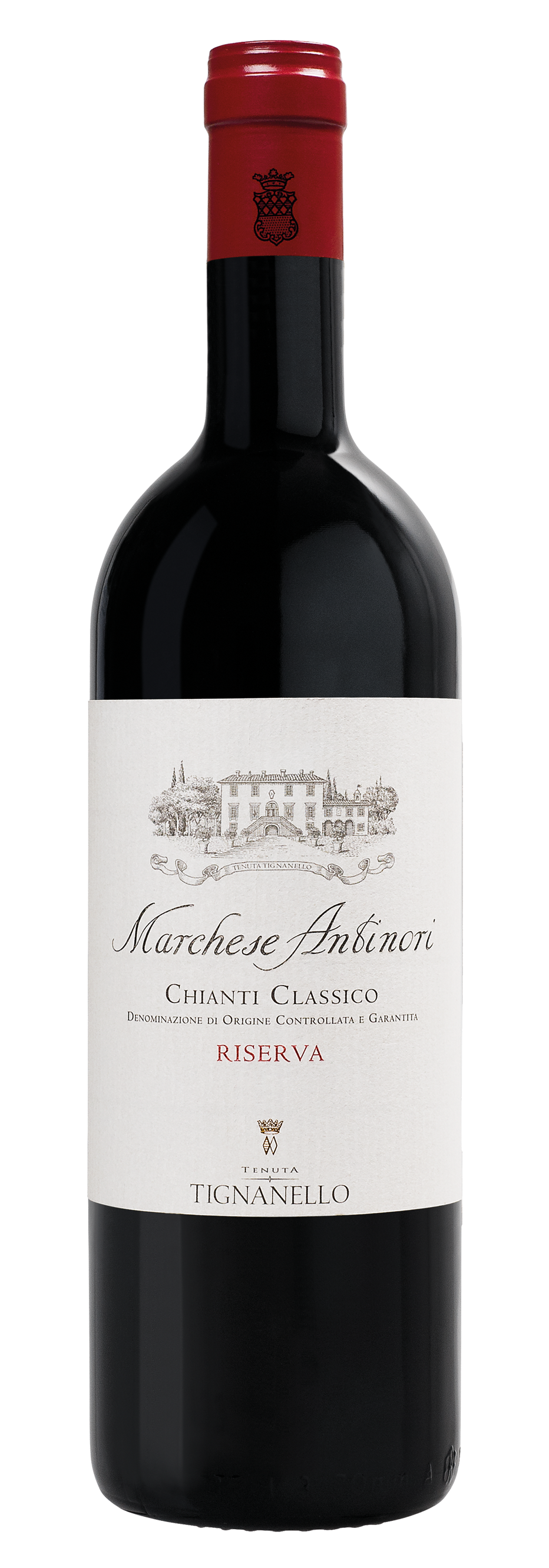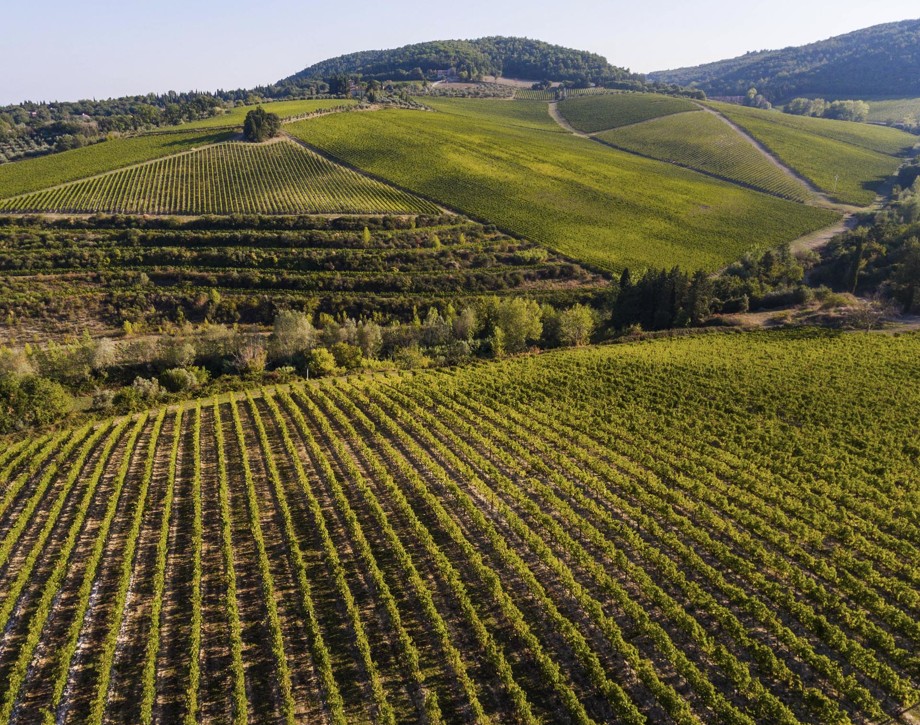Marchese Antinori 2007
The Wine
This Antinori family’s historic label, since the 2011 vintage Marchese Antinori has been produced with grapes exclusively from the Tignanello vineyard. It’s made almost entirely with Sangiovese with a small percentage of other complementary varieties. A wine that fully expresses the quality and elegance of Sangiovese grapes grown in this area.

The Wine
This Antinori family’s historic label, since the 2011 vintage Marchese Antinori has been produced with grapes exclusively from the Tignanello vineyard. It’s made almost entirely with Sangiovese with a small percentage of other complementary varieties. A wine that fully expresses the quality and elegance of Sangiovese grapes grown in this area.

Climate
2021 in Chianti Classico will be remembered for a long, patient growing season: a vintage able to produce wines of power and elegance. Winter temperatures were never extremely cold and the area experienced rain showers up until the end of March. The onset of spring prompted early budbreak, however, the vines’ vegetative cycle slowed down in April due to cool dry climate conditions. The months of May and June followed normal weather patterns, temperatures were never too hot and scattered rain showers assured optimal flowering and fruit set of all grape varieties. Overall, the summer season was hot and dry, especially in August, although at the end of the month light precipitation provided the needed moisture to begin an ideal ripening phase. September and October were picture perfect: sunny skies, gentle breezes with no extreme heat and cooler nighttime temperatures that allowed the grapes to ripen gradually. The 2021 vintage is considered to be one of the best vintages ever in Chianti Classico. Harvesting activities got underway mid-September with Sangiovese and were completed by mid-October with the Cabernet varieties.
Vinification
Upon arrival in the cellar, the grapes were destemmed, gently crushed; the must was transferred into stainless steel tanks, where alcoholic fermentation occurred in about one week’s time. Very gentle pump overs and délestage techniques were performed during maceration on the skins for an intense extraction while preserving elegant and supple tannins. Malolactic fermentation, which took place spontaneously, was completed by the end of the year. The wine was then blended and went into French and Hungarian oak barriques for approximately one year. Marchese Antinori Riserva was then bottled and given a further twelve-month period of bottle aging before being released.
Historical Data
The Tignanello estate is located in the heart of the Chianti Classico production zone, nestled between the valleys of the Greve and Pesa rivers, and extends over close to 800 total acres (319 hectares), some 130 of which (415 hectares) are planted to vines. The vineyards consist principally of the native Sangiovese grape along with such non-traditional varieties as Cabernet Sauvignon and Cabernet Franc. The Marchese Antinori is an historic wine of the Antinori cellars which, since 2011, is produced from the grapes of the Tignanello estate. It is a wine which presents itself as the full expression of the quality and elegance of the Sangiovese of this part of Tuscany.
Tasting Notes
Marchese Antinori Chianti Classico Riserva 2021 is an intense ruby red color. The nose delivers notes of red fruit, in particular black cherries, light hints of flowers and sweet impressions of powdered sugar. The bouquet is completed by hints of cinnamon and dill that impart pleasantly spicy nuances. The vertical palate is taut, pleasantly mouthfilling with supple tannins and closes with a lengthy, sapid, and full finish.

Tenuta Tignanello
The Tenuta Tignanello estate is in the heart of Chianti Classico, in the gently rolling hillsides between the Greve and Pesa river valleys. It extends over an area of 319 hectares (788 acres), of which about 165 (407 acres) are dedicated to vines. Two of the estate’s prized vineyards are on the same hillside, Tignanello and Solaia, on soils that originated from marine marlstone from the Pliocene period rich in limestone and schist.
Soil
Calcareous rocky soils with alberese (marl limestone) and marl.


















